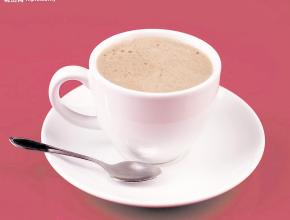Columbia Tarasu Latin American coffee with the name of extra hard beans.
Tarasu in Costa Rica is one of the major coffee producers in the world. The coffee is light and pure in flavor and pleasant in aroma. "Tarasu Latin America" coffee is a famous local product, but the production is limited, about 72600 kilograms a year. It is grown on a piece of land called "Latin America". In fact, this land can produce more than 450 tons of coffee a year. But Tarasu Latin America coffee is grown without artificial fertilizers or insecticides, and its harvesting and selection are done by hand, in order to avoid some damage to coffee beans caused by air spray selection. Other coffees worth mentioning are Juan Venus, Tulnon, Vidmir, Mondibelo and Santa Rosa. Fine coffee usually grows in Eredia and the central canyon. Another striking coffee is Saatchi, which grows on the slopes of Mount Boaz, 53 kilometers from San Jose. Saatchi, founded in 1949, has a land area of 30770 hectares and grows sugar cane and coffee. The area is also famous for its handicrafts, attracting tourists from all over the world.
Costa Rica's coffee industry, originally controlled by the Costa Rican Coffee Industry Corporation, has been taken over by the official Coffee Committee. Among the exported coffee, those products that are considered to be of substandard quality are colored with blue vegetable dyes and then transferred back to China for sale. Coffee consumed domestically (dyed blue or undyed) accounts for about 10% of total production, and local per capita coffee consumption is twice that of Italy or the United States.
Make a cup of Costa Rican coffee, pour it into the cup and taste it carefully, then you can appreciate its unique fragrance and rich flavor. The soft, moderate sour taste and rich aroma make the final rhyme reverberate in the throat for a long time, unforgettable. There are even comments that some of the flavors of Costa Rican coffee are very similar to those of Kona and the Blue Mountains of Jamaica.

Important Notice :
前街咖啡 FrontStreet Coffee has moved to new addredd:
FrontStreet Coffee Address: 315,Donghua East Road,GuangZhou
Tel:020 38364473
- Prev

Colombian coffee grounds that can absorb odors.
Perhaps most people's intuition thinks that coffee is irritating to the skin. after all, caffeine has some stimulant properties, but in fact, coffee can calm inflamed, red and swollen skin, thanks to its antioxidants. Antioxidants can delay the premature aging of the skin caused by sunshine and pollution, and can also remove free radicals that are harmful to the skin. The main coffee in Colombia
- Next

Salvadoran coffee beans of Italian espresso
Inherited by the landowner Juan Carlos Rodrigo (Juan Carlos Rodriguez) in 1962, the soil is fertile and full of various mineral nutrients, which is a valuable coffee growing condition in the Santa Ana volcano area. After the owner Rodrigo inherited his mother's coffee farm, he chose to plant 100% of the bourbon varieties and was more committed to carefully controlling the planting process. Luo
Related
- Does Rose Summer choose Blue, Green or Red? Detailed explanation of Rose Summer Coffee plots and Classification in Panamanian Jade Manor
- What is the difference between the origin, producing area, processing plant, cooperative and manor of coffee beans?
- How fine does the espresso powder fit? how to grind the espresso?
- Sca coffee roasting degree color card coffee roasting degree 8 roasting color values what do you mean?
- The practice of lattes: how to make lattes at home
- Introduction to Indonesian Fine Coffee beans-- Java Coffee producing area of Indonesian Arabica Coffee
- How much will the flavor of light and medium roasted rose summer be expressed? What baking level is rose summer suitable for?
- Introduction to the characteristics of washing, sun-drying or wet-planing coffee commonly used in Mantenin, Indonesia
- Price characteristics of Arabica Coffee Bean Starbucks introduction to Manning Coffee Bean Taste producing area Variety Manor
- What is the authentic Yega flavor? What are the flavor characteristics of the really excellent Yejasuffi coffee beans?

